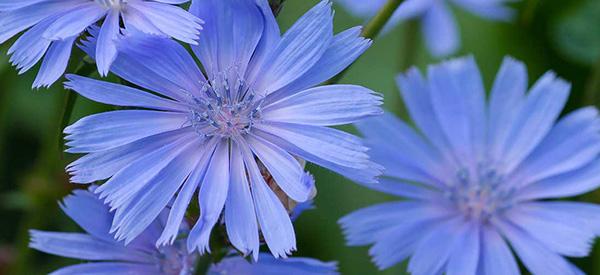
Chicory
Common Chicory (Cichorium intybus) is a woody perennial plant and a member of the dandelion family. This plant has many popular names including blue dandelion, blue daisy, coffee-weed, blueweed, wild endive, bunk, horseweed, and bachelor’s buttons.
Varieties of Chicory used in various food dishes include endive, sugarloaf, red endive, witlof, radicchio, and radichetta. In addition to being added to salads and eaten as vegetables, an extract from the roots has a range of uses and benefits.
The History of Chicory
Chicory has been utilized for some 5,000 years. It was first recorded in China and ancient Egypt. The ancient Romans enjoyed eating various dishes made from endive and chicory sprouts. However, it appears that the Romans also recognized the health benefits the plant provided. The Talmud also mentions Chicory.
Early settlers in the US used it for human and animal consumption to promote health and healing. Records of the cultivation of chicory as a crop go back to the 17th century in Europe when this plant was added to coffee to make it taste better. In fact, Chicory has been used as a coffee additive and a coffee substitute when coffee was either unobtainable or too costly.
Today this use for Chicory is enjoying a rebirth as more people want to follow healthier lifestyles and remove caffeine – found in coffee but not in Chicory – from their diets.
Where This Plant is Found
Chicory originated in northwest Asia and the Mediterranean region. However, it is more broadly considered to be native to western Asia, Europe, the UK, and North Africa.
It has now become extensively naturalized and grows wild and/or in gardens and/or commercially in the US, southern Canada, China, and Australia.
How to Identify Chicory
Chicory is a tall, branching, and scraggly plant that reaches a height of 2 – 5 feet / 61 – 152 centimeters. They are usually found growing on their own rather than in clumps. However, given they reproduce by scattering seeds, there are usually other solitary plants not too far away.
 Leaf: A new plant grows a rosette of basal leaves that are toothed. Young leaves are oval or egg-shaped, pale green, a slightly shiny. In mature plants, the ground-level leaves are 3 – 6 inches / long. Small, sparse leaves appear on alternative sides of the stems. These leaves only reach leaves ½ – 1 inch / 1 ¼ – 2 ½ centimeters in length.
Leaf: A new plant grows a rosette of basal leaves that are toothed. Young leaves are oval or egg-shaped, pale green, a slightly shiny. In mature plants, the ground-level leaves are 3 – 6 inches / long. Small, sparse leaves appear on alternative sides of the stems. These leaves only reach leaves ½ – 1 inch / 1 ¼ – 2 ½ centimeters in length.
- Stem: The rigid, green stems are only hairy on the lower section. The remainder of the stem is grooved which may have a reddish color in the upper sections.
- Flower: Chicory blooms in spring and summer. The flowers are the most distinctive feature of this plant.

- They are usually blue, have up to 20 petals per bloom, and are 1 ½ inches / 4 centimeters in diameter. Each petal is fringed and broader on the outer edge. Flowers open for part of the day and close again in accordance with the movement of the sun. Interestingly, the color appears to change slightly during the day, not all the flowers open each day, and none have a discernible scent.

- Root: This plant has a thick taproot that holds a bitter-tasting, milky liquid.
The roots of cultivated or domesticated Chicory are thinner than those of their wild counterparts
 Seeds: The seeds are oblong and flat and approximately ¼ inch / 1 ¼ centimeter in length.
Seeds: The seeds are oblong and flat and approximately ¼ inch / 1 ¼ centimeter in length.
Each plant will produce several thousand seeds.
It is the seeds that allow the plant to reproduce both in the wild and commercially.
Get Your Own Chicory Seeds, Last 30 Packs Left!
How to Grow Chicory
Common Chicory is not grown as an ornamental as the leaves and stems are not particularly attractive. The flowers are lovely, of course. If you are growing Cichorium intybus it needs certain conditions but is generally hardy.
Although they can tolerate a range of soil types, they prefer well-drained soil with a pH of 5.8 – 6.5. Fertile soil will improve root health and increased leaf growth. Plant Chicory in an area that is sunny and open although the dappled shade is fine too.
These plants can handle periods of drought but are happier in soil that is evenly moist. If you are using containers they should also be in sun and watered thoroughly and fed every fortnight in summer.
How to Propagate Common Chicory
The best way to propagate Common Chicory is from seeds which should be sown in early spring. Seeds should be placed no deeper than ¼ inch or 6 millimeters and kept moist until they germinate.
This usually takes 2 to 3 weeks at which point the seedlings should be separated and planted about 12 inches / 30 centimeters apart. You can plant a second batch in midsummer if the temperature is below 850 Fahrenheit / 29½0 Celsius.

You may have seedlings shoot where the plant has self-seeded from fallen flowers.
If you don’t want them, pull them quickly before the taproot becomes established.
Removing mature plants is hard work as the roots are thick and deep and the entire root must be removed to prevent it from regrowing.
Alternatively, remove spent flowers before they seed to prevent unwanted plants.
Related: 10 Plants That You Should Never Plant Together (Video)
How to Harvest Common Chicory
How and when you harvest depends on what part or parts you want to use:
- Roots: These should be harvested in the spring or fall in the first year of growth before they become woody.
 Some suggest that a good time is when the plant is about four months old. Dig around the plant and go deep enough to access the whole root. When the soil has been dug out around the root, pull it free.
Some suggest that a good time is when the plant is about four months old. Dig around the plant and go deep enough to access the whole root. When the soil has been dug out around the root, pull it free.
- Leaves: You can pick leaves at any time, but they are probably best before the plant blooms and when the leaves are still young. Mature leaves become extremely bitter.
- Flowers: These can be harvested at any time during the flowering season. Pick flower heads that are in full bloom, not buds or flowers that are wilted or going to seed.
- Seeds: Harvest seeds by removing the pods that form in late summer.
If you are foraging rather than harvesting on your own property, remember not to harvest from plants that are close to roads or in other areas where they are likely to have been exposed to increased levels of airborne contaminants. Don’t take more than you need so that there is plant material left for foragers who come after you.
What Chicory is Good For
Common Chicory offers a range of health-promoting active ingredients including beta-carotene, calcium, manganese, zinc, folic acid, iron, potassium, and vitamins A, B 6, C, E, and K. The primary bitters are lactucin and lactucopicrin, although other lactones and glycosides are present. The roots are particularly high in inulin which is considered a natural prebiotic.
While there is a marked lack of clinical studies and evidence, Cichorium intybus root is believed to be helpful as it has anti-inflammatory, anti-bacterial, and sedative properties. These and others seem to be effective in:
- Reducing swelling
 Lowering blood pressure
Lowering blood pressure- Reducing blood sugar levels
- Boosting the immune system
- Easing constipation
- Reducing appetite
- Easing inflammatory conditions such as arthritis
- Reducing bad cholesterol
- Easing indigestion
- Improving digestive health by boosting healthy bacteria
- Reducing anxiety
- Improving urine flow.
While clinical evidence would reassure and persuade many of the medicinal value of Cichorium intybus, there are centuries of anecdotal evidence of its benefits.
Add Chicory to Your Backyard, Last 30 Packs Left!
What Parts of The Plant are Used in Remedies?
All the parts of the Chicory plant are used, from the root to the seeds. While the flowers can be eaten, they are not popular as they are very bitter. In terms of health-giving preparations, the roots, leaves, and flowers are utilized.
A DIY Chicory Recipe
As previously mentioned, Common Chicory has been used as a coffee substitute or additive for a few hundred years. This practice is having a revival now as the shift to a healthier diet gains momentum. This plant offers a caffeine-free alternative to the coffee so many enjoy.
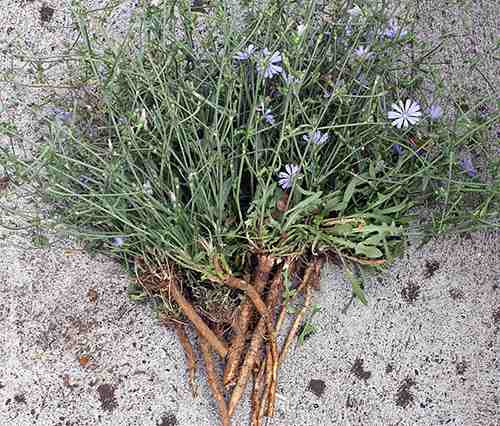
You have two options when it comes to making coffee from the roots of Cichorium intybus: you can buy ready-prepared roots, or you can harvest and process roots. Let’s look at the second option:
- Wash the just-harvested roots well in cold or lukewarm water

- Dry the roots with a paper towel

- Cut the root as finely as you can

- Spread the pieces out in a single layer on a baking sheet or tray

- Roast the root pieces at 3500 Fahrenheit / 1800 Celsius for 5 to 7 hours so they are completely dry.

Once you have the dried root you can make yourself Chicory coffee:
Ingredients
- ½ teaspoon Common Chicory root
- 1 cup of boiling water.
 Method
Method
- Place the Chicory in a suitable container

- Pour boiling water over it

- Cover the mixture and leave it to brew until it reaches the desired strength

- Strain the liquid to remove the plant material. If there are still too many ‘bits’ in it, you could strain it through cooking muslin
- Pour the liquid into a cup or mug.

You could add a little of any or a combination of the following to suit your taste:
- Regular coffee
- Milk (straight or frothed)
- A clove
- A sprinkle of cinnamon or nutmeg.

You can enjoy a cup several times a day if you wish to.

Dosage
There are currently no standard guidelines on dosages for Chicory. As with any remedy, there is a range of factors that should be considered including:
- Age
- The general state of health / existing health problems
- Current medication
- Which preparation is utilized
- What remedy is being used for.
If you have purchased a Chicory-based product, ensure that (a) you do so from a reputable supplier and manufacturer and (b) you follow the dosage directions on the packaging.
How to Preserve This Plant
There are options with each plant part:
- The roots of Common Chicory are preserved as described in the first section of the recipe above. The chopped, dried roots should be stored where they will remain dry so that they do not become moldy.
Whole roots can be kept for up to 90 days if stored where they are warm but won’t become damp. Dried, chopped, or ground root has a shelf-life of
- Stems and leaves should not be frozen as they will lose both active ingredients and flavor. They can be stored fresh in a refrigerator for up to 10 days after harvesting after they have been thoroughly washed and patted dry. If you want to keep them longer than that, they must be thoroughly dried and stored in airtight containers.
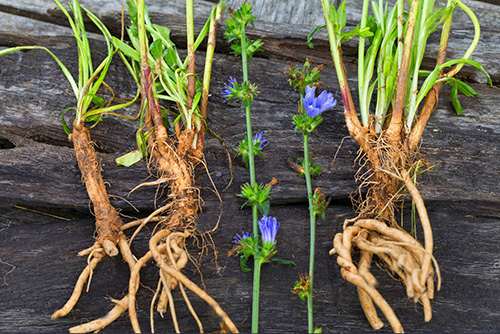
Drying could either be oven-drying or spread out on racks in the sun or indoors in a well-ventilated area until the plant material is crunchy to the touch. Dried material will last for up to 3 weeks if correctly processed and stored.
- If you harvest the whole plant, you should hang it upside down in a cool and well-ventilated area that does not get direct sunlight so that the plant does not become mildewed or moldy.
Some forms of Common Chicory do not have the shelf life that some other plants have. However, if you wish to, you could also make a tincture. Chicory Seeds, Last Minute Deal!
What Plants Resemble Chicory?
The good news is that Cichorium intybus is distinctive and easy to identify, particularly when it is in bloom. The even better news is that, even if you aren’t entirely sure, there are no poisonous look-alike plants.
One source of confusion centers around names rather than plant identification. In the US, the common name for curly endive (Cichorium endivia) is Chicory. This comparison should also make things easier.
| Feature | Common ChicoryCichorium intybus | Curly endiveCichorium endivia |
|---|---|---|
| Size | Up to 2 – 5 feet / 61 – 152 centimeters in height | Similar size to lettuce, 5 – 6 inches / 12 – 15 centimeters in height |
| Leaves | Rosette of basal leaves, sparse leaves on the stem, toothed | Loosehead of narrow lacy outer leaves, off-white leaves in the center |
| Flowers | Pale blue, +- 20 fringed petals that are broader on the outer edge | There are no flowers to speak of |
| Stems | Rigid, green, grooved, only hairy on the lower section | Thick, central stalk |
| Roots | Deep taproot that contains a milky fluid | Taproot that sends out new shoots after trimming off leaves |
 |
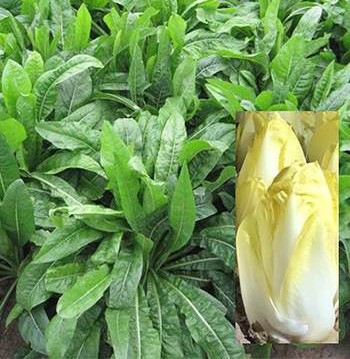 |
These two species are very closely related, and the shared name can muddy the waters. It’s important, therefore, to rely on the botanical name.
Warning And Cautions
While there don’t appear to be any cautions about interactions with medication or drugs, there are warnings in relation to the use of Common Chicory by certain individuals:
- Individuals who are allergic to plants in the Asteraceae / Compositae family such as daisies, marigolds, ragweed, or chrysanthemums.
- Pregnant and breastfeeding women
- People on medication for diabetes
- Individuals suffering from gallstones
- Anybody who is scheduled for surgery or has recently had a procedure.
When ingested, this plant can cause some mild gastric discomfort for some people. It should also be noted that safety when it comes to long term use for some conditions and individuals is unknown.
As with any remedy, plant-based or otherwise, check with your healthcare practitioner before you start using it. This applies to Common Chicory too.
Herbal Coffee Substitutes You Can Drink Every Morning
The US Army’s Forgotten Food Miracle (Video)
If You See This Plant in Your Backyard, Don’t Step on It






 Leaf: A new plant grows a rosette of basal leaves that are toothed. Young leaves are oval or egg-shaped, pale green, a slightly shiny. In mature plants, the ground-level leaves are 3 – 6 inches / long. Small, sparse leaves appear on alternative sides of the stems. These leaves only reach leaves ½ – 1 inch / 1 ¼ – 2 ½ centimeters in length.
Leaf: A new plant grows a rosette of basal leaves that are toothed. Young leaves are oval or egg-shaped, pale green, a slightly shiny. In mature plants, the ground-level leaves are 3 – 6 inches / long. Small, sparse leaves appear on alternative sides of the stems. These leaves only reach leaves ½ – 1 inch / 1 ¼ – 2 ½ centimeters in length.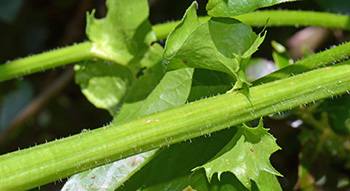
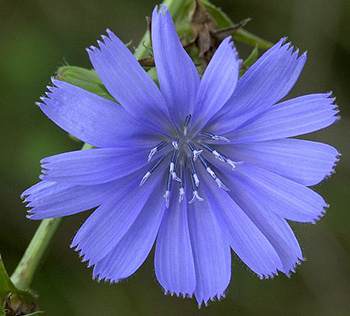
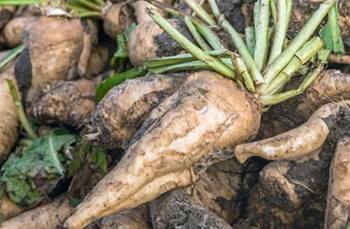
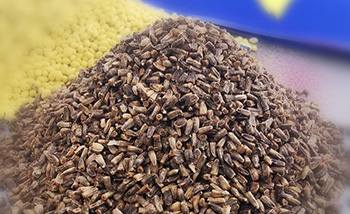 Seeds: The seeds are oblong and flat and approximately ¼ inch / 1 ¼ centimeter in length.
Seeds: The seeds are oblong and flat and approximately ¼ inch / 1 ¼ centimeter in length. 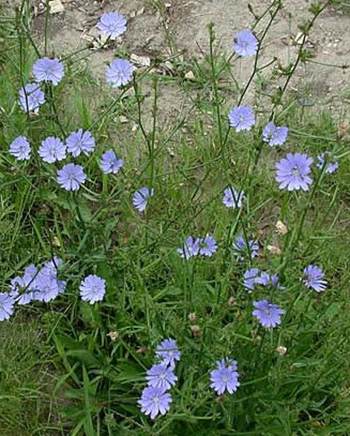 Lowering blood pressure
Lowering blood pressure
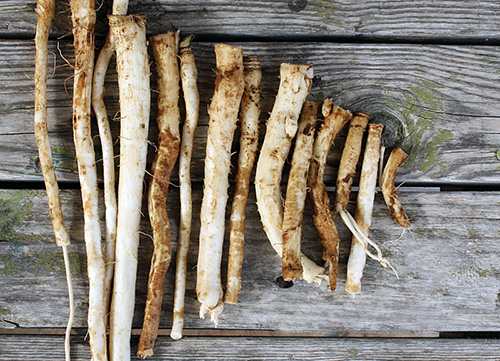
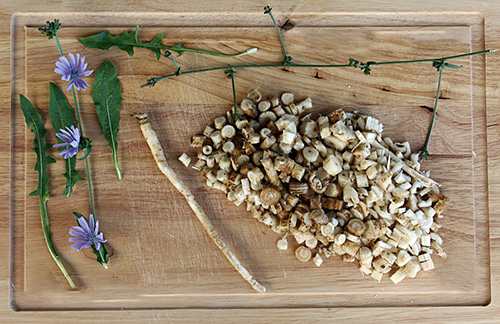
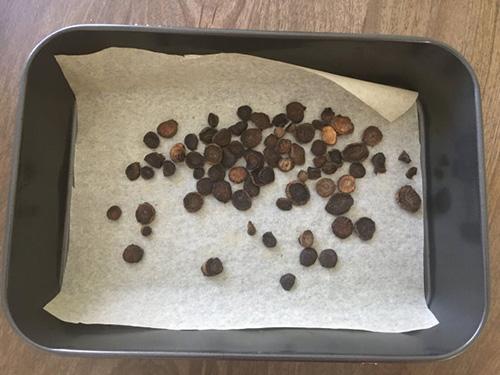
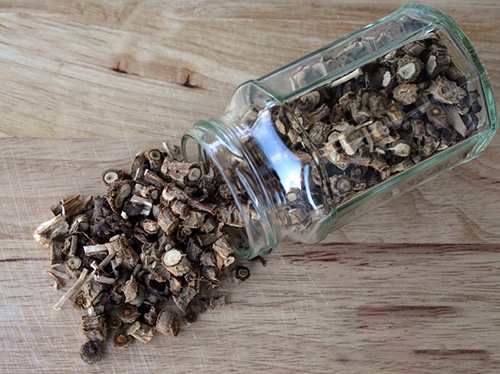
 Method
Method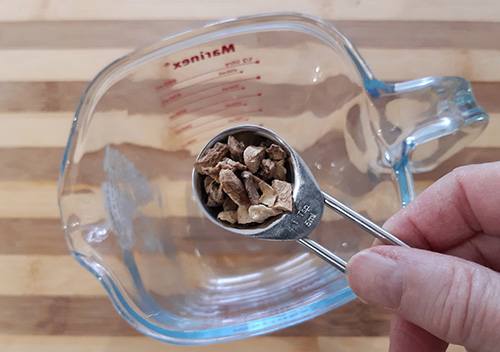
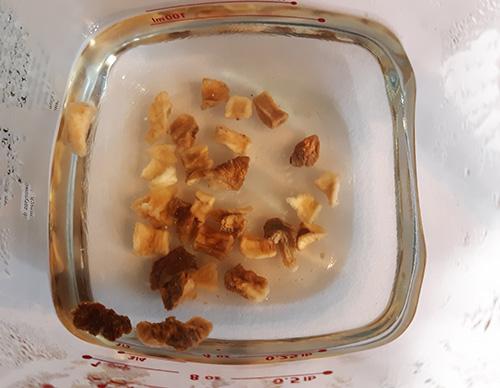
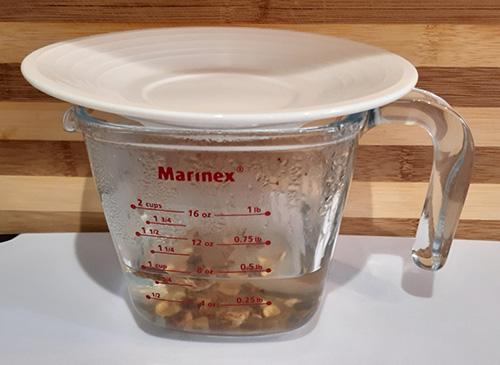
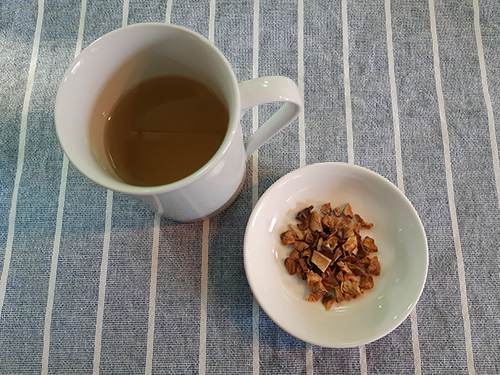
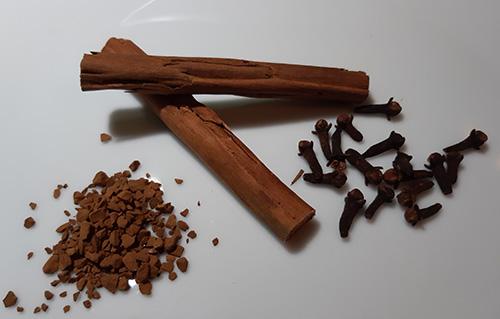


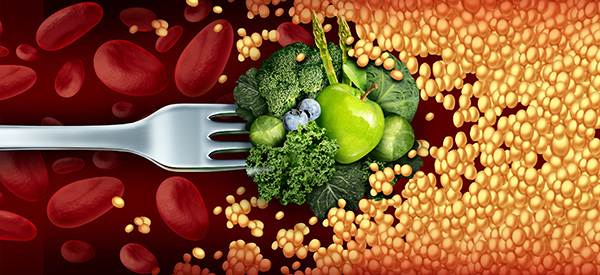
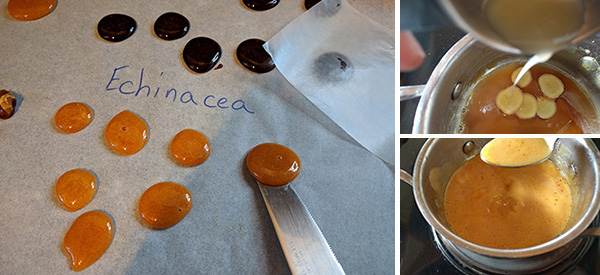
Thank you for all your wonderful information. I was wondering if you can lighten me of the benefits of a plane called MORINGA. A friend told me it would take away the need for medication for diabetes.
Is the warning for people who are taking diabetic medications due to the possibility of further lowering the blood sugar with chicory?
Hi Keri,
Thank you for your comment. In the section “Warning and Cautions” it is mentioned that while there don’t appear to be any cautions about interactions with medication or drugs, there are warnings in relation to the use of Common Chicory by certain individuals including people on medication for diabetes.
As with any remedy, is it best to check with your healthcare practitioner before you start using it.
God bless!
Is chicory coffee decaf?
Chicory contains no caffeine.